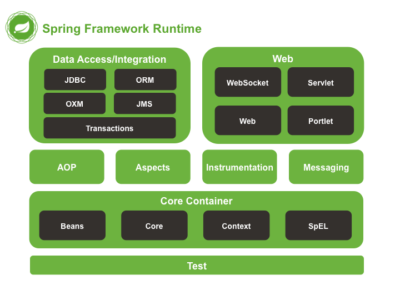What is Spring?
The Spring Framework is an open-source Java platform that provides comprehensive infrastructure support for developing Java applications. It offers a range of features such as an Inversion of Control (IoC) container, Aspect-Oriented Programming (AOP), data access and transaction management, and more. It is often used for building enterprise-level applications, but can also be used for building simple web applications. It can be used in any Java application, but it is particularly well-suited for building large, complex, and modular applications.
Spring’s Inversion of Control (IoC) container is responsible for managing the lifecycle of application objects and providing them with dependencies. The container can be configured using XML or Java-based configuration and it also supports annotation-based configuration.
Spring AOP (Aspect-Oriented Programming) module enables the separation of cross-cutting concerns from the main business logic. It provides a way to modularize cross-cutting concerns such as logging, transaction management, and security, into reusable modules that can be applied to multiple classes.
Spring’s Data Access module provides a consistent approach to data access, regardless of the underlying data access technology. It supports various data access technologies like JDBC, Hibernate, JPA, and more.
Spring’s transaction management module provides a consistent programming model across different transaction APIs such as JDBC, Hibernate, and JPA.
Spring also provides various other features like Spring MVC, Spring Security, Spring Boot, Spring Cloud, and more. These features are designed to make it easier to develop and deploy enterprise-level applications and to help you build applications that are easy to test, maintain, and extend over time.
